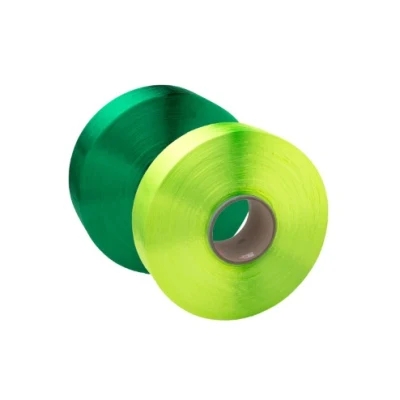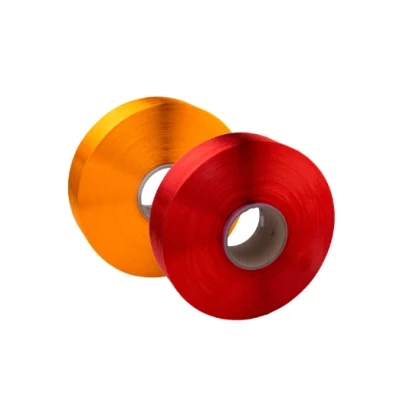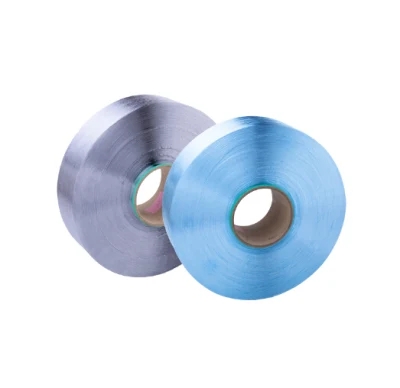


PP yarn means polypropylene yarn. It is a fiber obtained by polymerization and melt spinning from propylene as raw material. Polypropylene officially
started industrial production in 1957 and is a rising star in synthetic fibers. Because polypropylene has the advantages of simple production process,
cheap products, high strength and light relative density, polypropylene has developed rapidly. At present, polypropylene is the fourth largest variety
of synthetic fibers, and it is the lightest fiber among common chemical fibers.
Chemical properties
The scientific name is polypropylene fiber. It melts near the flame and is flammable. It burns slowly and emits black smoke. The upper end of the flame
is yellow and the lower end is blue.
Physical properties
1. Form The longitudinal surface of polypropylene fiber is straight and smooth, and the cross-section is circular.
2. The biggest advantage of density polypropylene is its light texture. Its density is only 0.91g/cm3, which is the lightest variety among common chemical
fibers. Therefore, polypropylene of the same weight can obtain a higher coverage area than other fibers.
3. Strong elongation Polypropylene has high strength, long elongation, high initial modulus and excellent elasticity. So polypropylene has good abrasion
resistance. In addition, the wet strength of polypropylene is basically equal to the dry strength, so it is an ideal material for making fishing nets and cables.
4. Light hygroscopicity and dyeing properties, good warmth retention; almost no moisture absorption, but strong wicking ability, obvious moisture
absorption and perspiration effect; polypropylene has very little hygroscopicity, almost no moisture absorption, and the moisture regain under general
atmospheric conditions is close to zero . But it has a wicking effect, passing water vapour through the capillaries in the fabric, but does not have any
absorption effect on its own. Polypropylene has poor dyeability and incomplete chromatogram, but it can be compensated by the method of dope dyeing.
5. Acid and alkali resistance Polypropylene has good chemical corrosion resistance. Except for concentrated nitric acid and concentrated caustic soda,
polypropylene has good resistance to acid and alkali, so it is suitable for use as filter material and packaging material.
6. Light fastness, etc. Polypropylene has poor light fastness, poor thermal stability, easy aging, and is not resistant to ironing. But the anti-aging performance
can be improved by adding anti-aging agent during spinning. In addition, polypropylene has good electrical insulation, but it is easy to generate static
electricity during processing. Due to the small thermal conductivity of polypropylene, the heat preservation is good.
7. High strength The strength of polypropylene elastic yarn is second only to nylon, but the price is only 1/3 of nylon; the fabric is stable in size, good in
wear resistance and elasticity, and has good chemical stability. However, it has poor thermal stability, is not resistant to sunlight, and is prone to aging
and brittle damage. For this reason, anti-aging agents are often added to polypropylene.
 English
English Español
Español Português
Português Pусский
Pусский Français
Français Deutsch
Deutsch 日本語
日本語 한국어
한국어 Italiano
Italiano عربى
عربى